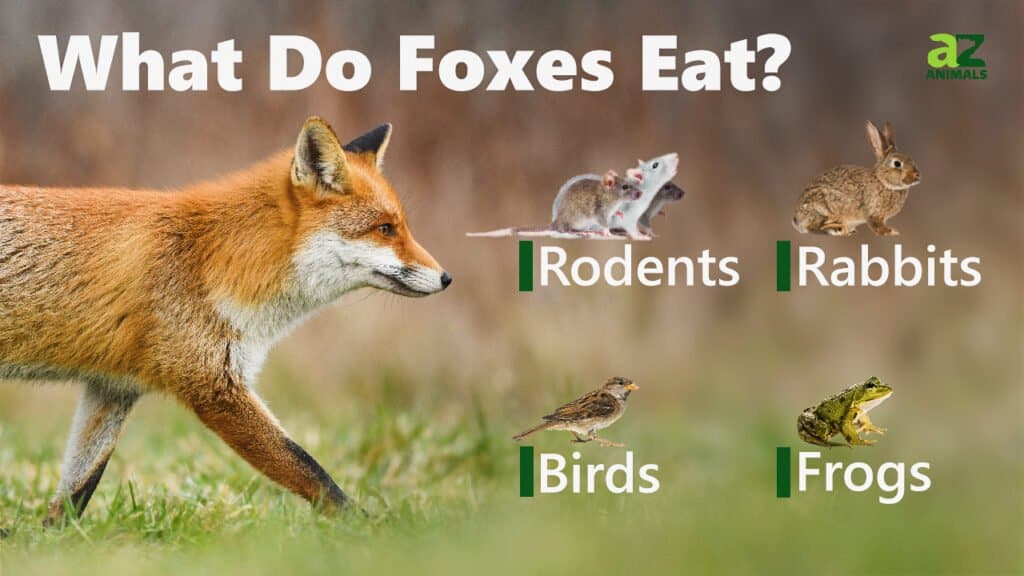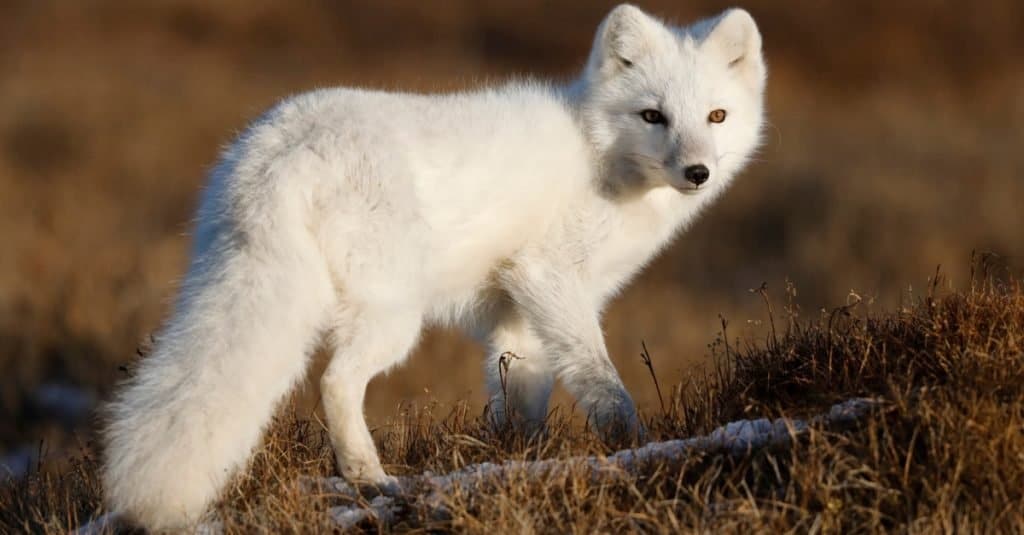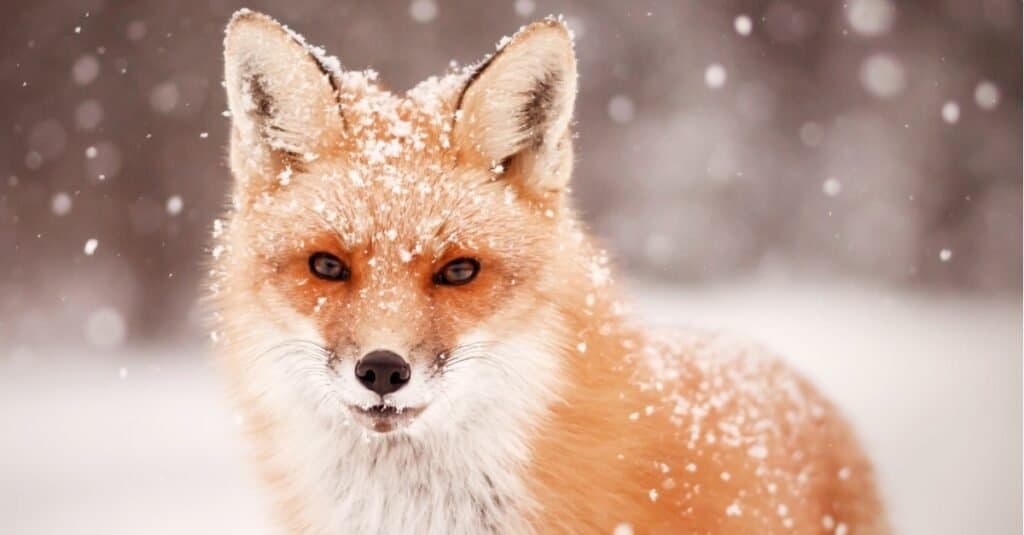
Foxes often get a bad rap, and not just in fairytales, where they often act as antagonists or tricksters. People who raise small animals know well the damage a fox can do if it gets into your yard. Despite their bad reputation, foxes can actually act quite friendly. They usually pose little to no threat to humans and will tolerate most house pets.
They tend to mind their own business, and urban foxes will even live peacefully alongside people. Known for their curiosity and high energy, foxes mostly get in trouble when they target domesticated chickens, rabbits, or ducks. To avoid problems with foxes, it’s important to know what they like to eat. That said, what do foxes eat, and how do they find food?
In this article, we’ll examine the foods that foxes like to eat best, as well as how they hunt and forage for food. In addition, we’ll discuss what wild foxes eat versus what pet foxes eat. Finally, we’ll wrap up with an exploration of what baby foxes eat. Let’s cut to the chase and answer the question of exactly what foxes eat.
What Do Foxes Like to Eat?

Foxes are omnivores and eat a wide variety of foods.
©iStock.com/Rejean Bedard
Contrary to popular belief, foxes are not carnivores, but actually omnivores. In the wild, foxes will eat a wide variety of foods, although their diet is primarily meat-based. Generally, they will hunt animals when available but will settle for plants when they can’t catch meat.
In particular, they enjoy high protein, fatty foods like fish, eggs, and birds. That said, they also enjoy sweet and savory foods, like fruit, dairy, and nuts. Overall, you can boil down the foods that foxes like to eat into 15 categories.
The foods that foxes like to eat most include:
- Rodents
- Rabbits
- Birds
- Frogs
- Worms
- Insects
- Raccoons
- Reptiles
- Crabs
- Mollusks
- Fruit
- Seeds
- Fungi
- Vegetables
- Eggs
When readily available, foxes will also eat carrion. If a fox lives in close proximity to humans, it may also eat trash or leftover food.
How Often Do Foxes Hunt for Food?

These canids will eat as long as the food is available. They are capable of consuming anything between 0.5 and 1 kg of food each day.
©iStock.com/Tyrannax
Foxes are known for hunting early in the morning or during the night. They mainly wait patiently for the sound of a mouse or other small animal moving along the ground pouncing only when the time is right. At other times, foxes may hear movement underground and begin to dig for their prey. They are known to dig quickly to locate their next meal.
Fox will eat as often as possible. Because of their amazing hearing, foxes will find, attack, and eat prey as soon as prey can be located and if they are hungry. These canids will eat as long as the food is available. They are capable of consuming anything between 0.5 and 1 kg of food each day.
How Do Foxes Hunt and Forage For Food?

Foxes surprise their prey by pouncing on them unawares.
©Agami Photo Agency/Shutterstock.com
Most foxes are nocturnal and do the bulk of their hunting and foraging at night. That said, it’s not unusual to see a fox out at dusk or dawn, or even during the day. True to nature, most foxes hunt using stealth. They prefer to sneak up on their prey and take them unawares rather than run their food down.
However, foxes can run quickly and can catch fleeing prey if required. For example, red foxes can run up to 30 miles per hour, while gray foxes can run 40 miles per hour. Foxes will use a pouncing technique to pin prey, then kill their target using their sharp teeth. Typically, they will break their prey’s neck or back, or puncture their throat to deliver a killing blow. If they can not finish a meal in one sitting, foxes may store leftover food nearby and come back for it later.
Foxes adapted highly-attuned senses to help them hunt at night. Their hearing is so sharp, they can hear a mouse squeak up to 100 feet away. They can move their ears independently, which allows them to accurately pinpoint where sounds originate from. Foxes also possess an excellent sense of smell. This allows them to detect animals nesting below ground.
Proficient diggers and foxes will quickly burrow into the dirt, ice, or rocks to get at insects and small animals. In addition, foxes also possess an excellent vision that is adapted to help them hunt at night. They possess a 260-degree field of vision, although their vision largely relies on them detecting movement. Their vision shares a lot in common with cats, and like dogs, they cannot see green or red colors.
What Do Foxes Eat in the Wild?

The red fox eats rodents, rabbits, eggs, birds, fruits, carrion, and anything else it can catch.
©iStock.com/The_Near_North
In the wild, a fox’s diet will vary according to the seasons and its natural habitat. For example, in more northern climates, foxes will eat cold-adapted mammals like lemmings and snowshoe hares. Meanwhile, foxes that live further south will eat more warm-adapted animals.
During winter, foxes primarily eat small mammals, while during summer they will eat more fruits, vegetation, and insects. Differences also exist between species, although this likely has more to do with distribution than biology.
The red fox is the largest species of true fox and the most widely distributed fox species. They feed on numerous small mammals including voles, mice, ground squirrels, hamsters, gerbils, woodchucks, gophers, and rats. They will also eat songbirds and waterfowl, as well as eggs.
Red foxes may also target larger prey such as raccoons, opossums, and porcupines, as well as insects, reptiles, and fish. Their diet also includes plant material and fruits like berries, apples, plums, pears, and acorns. At night, red foxes will prey on carrion, and may also target poultry farms. Foxes that live near urban populations will also eat rats, pigeons, or any trash they can find.
What Do Pet Foxes Eat?

The Russian red fox is the only somewhat domesticated breed of a fox.
©RT Images/Shutterstock.com
First off, foxes are wild animals. Even foxes raised in captivity possess wild instincts, and should not be treated like domesticated dogs. That said, there is one breed of a fox that was specifically bred for domestication, the Russian red fox. Still, these foxes still require a lot of specialized care and attention.
In addition to plenty of exercise and room to run, pet foxes require a unique diet to ensure their optimal health. The proper diet for a pet fox will include the right balance of protein, vitamins, and minerals. Generally speaking, a pet fox can eat high-quality, grain-free dog food. Just make sure to adjust the proportions according to your pet fox’s weight.
You can also buy specially formulated fox feeds that contain the right amount of protein and taurine. As a treat, you can include small amounts of fruit and vegetables. Popular treats include:
- Strawberries
- Blueberries
- Apples
- Carrots
- Mushrooms
- Eggs
- Raw meat
Pet foxes should also get a regular supply of insects if you let them outside. Alternatively, you can include live insects in their diet such as grasshoppers, grubs, crickets, beetles, and caterpillars. However, you should avoid feeding your fox certain foods. These foods could prove toxic to your pet fox. Potentially problematic foods include:
- Avocados
- Grains
- Grapes and raisins
- Caffeine
- Onions
- Chocolate
- Garlic
- Pits and seeds from fruits
What Do Baby Foxes Eat?

Baby foxes rely on their mothers to feed them and teach them how to hunt.
©iStock.com/Harry Collins
Baby foxes, or kits, are born blind and rely solely on their parents for food. For the first two weeks, they eat only the regurgitated meat that their moth feeds them. Once they can stomach whole food, their mother will bring them small live prey, like mice and insects. Practicing killing live prey teaches them the skills they will need to survive in the wild.
By the time they can go hunting with their mother, juvenile foxes possess most of the abilities they need to hunt and forage for food. If you have a pet baby fox that is still in the weaning phase, you can feed it a puppy milk replacement formula.
Around 1 month old, you can start to feed your baby pet fox solid foods. It’s best to start with an all-meat diet, particularly raw rabbit, chicken, and rodents. If you can supplement its diet with live insects that’s even better. Over time you can slowly add more foods as it transitions into adulthood.
What Can Foxes Not Eat?

As a rule, if a fox doesn’t eat something in the wild, it should not be fed to it at home.
©Mary_wolf88/Shutterstock.com
It may seem as though foxes have a diverse diet, but even for them, there are items that they should not eat, regardless of whether they are in the wild or kept as a pet. Foxes do eat processed food and shouldn’t be given any either. To elaborate further on some of the food items mentioned above, as a rule, if they don’t eat something in the wild, they should not be fed it at home.
Their diet does not contain grains, or anything in the grain family, which includes items like oats, rice, and wheat, and should be avoided. Additionally, while bread may not cause harm, it is also a food item that should be kept away from these mammals. Here are a few other items that should be kept away from them:
- Chocolate – this sweet is toxic for many animals and this includes the fox. Containing the chemical compound theobromine, it is not digestible to these mammals.
- Cooked bones – bones can splinter and just as you shouldn’t be feeding these to your dog, they shouldn’t be given to foxes.
- Dairy Products – all dairy can cause digestive issues to these lactose-intolerant canines.
The photo featured at the top of this post is © Danita Delimont/Shutterstock.com
Thank you for reading! Have some feedback for us? Contact the AZ Animals editorial team.






